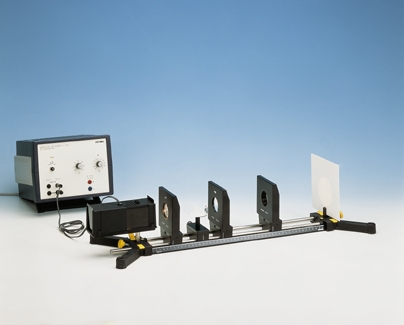Rotation of the polarisation plane with a sugar solution Principle This experiment makes great demands on the students. The saccharimeter model must not only be meticulously constructed, but the measurements also require painstaking care. This is made even more difficult by the requirement for complete darkness in the physics laboratory.
The obvious solution is a division of labour. For example, the class can be divided into two groups, which perform the measurements with the single or double layer thickness, respectively. Subsequently, the results can be exchanged and recorded. Benefits - Multifunctional light box - All-in-one: Can be used for geometric optics on the table, colour mixing and on an optical bench
- Extension with others sets at anytime, no additional light sources needed, recognition value for students
Tasks How does a saccharimeter work? To construct a model of a saccharimeter and investigate how a sugar solution behaves when polarised light is passed through it. Scope of delivery |
Optical profile-bench for student experiments, l = 600 mm
|
08376-00
|
1
| |
Light box, halogen 12V/20 W
|
09801-00
|
1
| |
Bottom with stem for light box
|
09802-20
|
1
| |
Cuvette, double semicircular
|
09810-06
|
1
| |
Colour filter set, additive (red, blue, green)
|
09807-00
|
1
| |
Diaphragm with hole, d=20mm
|
09816-01
|
1
| |
Lens on slide mount, f=+50mm
|
09820-01
|
1
| |
Lens on slide mount, f=+100mm
|
09820-02
|
1
| |
Slide mount for optical bench
|
09822-00
|
3
| |
Mount with scale on slide mount
|
09823-00
|
1
| |
Table with stem
|
09824-00
|
1
| |
Screen, white, 150x150 mm
|
09826-00
|
1
| |
Diaphragm holder, attachable
|
11604-09
|
2
| |
Polarization filter, 50 mm x 50mm
|
08613-00
|
2
| |
PHYWE Power supply, 230 V, DC: 0...12 V, 2 A / AC: 6 V, 12 V, 5 A
|
13506-93
|
1
|
|



